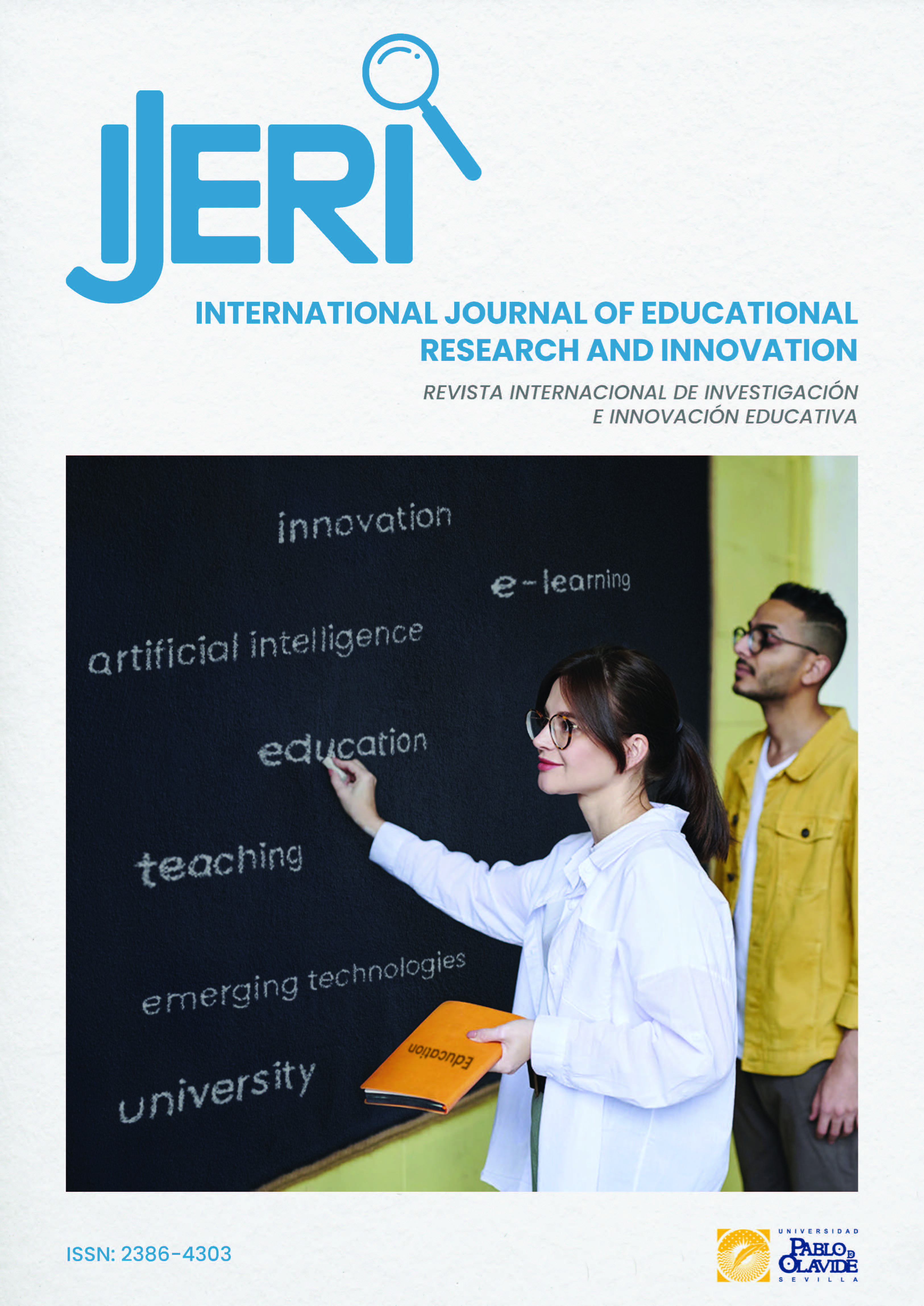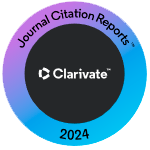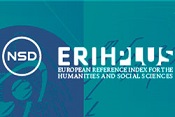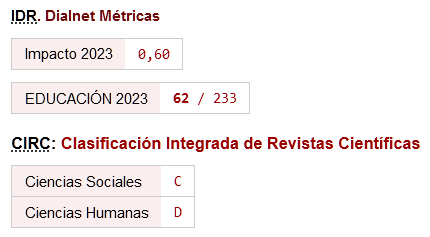Evaluating an Emotional Awareness Intervention for Adolescents with Asperger Syndrome
Insights and outcomes
DOI:
https://doi.org/10.46661/ijeri.11218Keywords:
Autism spectrum disorder, emotional awareness, social skillsAbstract
The purpose of the study was to evaluate the effectiveness of intervention in improving emotional awareness in children with Asperger syndrome. The intervention guide of Alice Kassotaki (2015) for "Recognizing, Expressing & Regulating Emotions" was applied. The intervention is based on the methodology of the three levels of basic emotions. A survey was conducted in the age group of 12-15 years in North Greece. Emotional awareness scores of the experimental and control groups before and after intervention are compared. The results indicate that the intervention improved emotional awareness, which is crucial for social awareness and managing interpersonal relationships. This research suggests the importance of promoting further research in the field of social cognition and social emotions, which play a central role in socialization and social relations.
Downloads
References
Azad, G. F., Locke, J., Kasari, C., & Mandell, D. S. (2017). Race, disability, and grade: Social relationships in children with autism spectrum disorders”. Autism: the international journal of research and practice, 21(1), 92–99. https://doi.org/10.1177/1362361315627792
Barbaro, J. & Yaari, M. (2020). Study protocol for an evaluation of as detect - a mobile application for the early detection of autism, BMC Pediatrics, 20(1), 1-11. https://doi.org/10.1186/s12887-019-1888-6
Barroso-Osuna, J., Gutiérrez-Castillo, J. J., Llorente-Cejudo, M. d. C., & Valencia Ortiz, R. (2019). Difficulties in the Incorporation of Augmented Reality in University Edu-cation: Visions from the Experts. Journal of New Approaches in Educational Re-search, 8(2), 126-141. https://doi.org/10.7821/naer.2019.7.409
Bird, G., & Cook, R. (2013). Mixed emotions: the contribution of alexithymia to the emotional symptoms of autism. Translational psychiatry, 3(7), e285. https://doi.org/10.1038/tp.2013.61
Bisch, J., Kreifelts, B., Bretscher, J., Wildgruber, D., Fallgatter, A., & Ethofer, T. (2016). Emotion perception in adult attention-deficit hyperactivity disorder. J. Neural Transm, 123, 961–970. https://doi.org/10.1007/s00702-016-1513-x
Boden, M. T., & Thompson, R. J. (2015). Facets of emotional awareness and associations with emotion regulation and depression. Emotion, 15(3), 399–410. https://doi.org/10.1037/emo0000057
Boekaerts, M. (2010). The crucial role of motivation and emotion in classroom learning. In Dumont, H., Istance, D., & Benavides, F. (Eds.), The Nature of Learning: Using Research to Inspire Practice, Educational Research and Innovation (pp. 91–111). Paris: OECD Publishing. https://doi.org/10.1787/9789264086487-6-en
Bora, E., & Pantelis, C. (2016). Meta-analysis of social cognition in attention-deficit/hyperactivity disorder (ADHD): comparison with healthy controls and autistic spectrum disorder. Psychol. Med., 46, 699–716. https://doi.org/10.1017/S0033291715002573
Boyd, L., Day, K., Stewart, N., Abdo, K., Lamkin, K., & Linstead, E. (2018). Leveling the playing field: supporting neurodiversity via virtual realities. Technology & Amp; In-novation, 20(1), 105-116. https://doi.org/10.21300/20.1-2.2018.105
Busschaert, C., De Bourdeaudhuij, I., Van Cauwenberg, J., Cardon, G., & De Cocker, K. (2016). Intrapersonal, social-cognitive and physical environmental variables related to context-specific sitting time in adults: a one-year follow-up study. The international journal of behavioral nutrition and physical activity, 13, 28. https://doi.org/10.1186/s12966-016-0354-1
Cohen, A., Asraf, K., Saveliev, I., Dan, O., & Haimov, I. (2021). The effects of sleep deprivation on the processing of emotional facial expressions in young adults with and without ADHD. Sci. Rep., 11, 1–11. https://doi.org/10.1038/s41598-021-93641-7
Elsabbagh, M., Divan, G., Koh, Y. J., Kim, Y. S., Kauchali, S., Marcín, C., … Fombonne, E. (2012). Global Prevalence of Autism and Other Pervasive Developmental Disorders. Autism Research, 5(3), 160–179. https://doi.org/10.1002/aur.239
Fessl, A., Rivera-Pelayo, V., Pammer, V., & Braun, S. (2012). Mood tracking in virtual meetings. In 21st century learning for 21st century skills (Vol. 7563, pp. 377–382). Saarbrücken, Germany: Springer Berlin Heidelberg. https://doi.org/10.1007/978-3-642-33263-0_30
Garcia-Garcia, J. M., Cabañero, M. del M., Penichet, V. M. R., & Lozano, M. D. (2019). EmoTEA: Teaching children with autism spectrum disorder to identify and express emotions. In Proceedings of the XX International Conference (pp. 123–130). https://doi.org/10.1145/3335595.3335639
Hadwin, A. F., Järvelä, S., & Miller, M. (2011). Self-regulated, co-regulated, and Socially Shared Regulation of Learning. In Zimmerman, B., Schunk D., & Perry, N., (Eds), Handbook of Self-Regulation of Learning and Performance (pp. 65–82).
Hambleton, R. K. (2001). The next generation of the ITC Test translation and adaptation guidelines. European Journal of Psychological Assessment, 17, 164-172. https://doi.org/10.1027//1015-5759.17.3.164
Happé, F. G. E. (1995). The role of age and verbal ability in the theory of mind task performance of subjects with autism. Child Development, 66(3), pp. 843–855. https://doi.org/10.2307/1131954
Huggins, C. F., Donnan, G., Cameron, I. M., & Williams, J. H. G. (2021). Emotional self-awareness in autism: A meta-analysis of group differences and developmental effects, Autism. 25(2), 307-321. https://doi.org/10.1177/1362361320964306
Ibáñez, A., Aguado, J., Baez, S., Huepe, D., Lopez, V., & Ortega, R., et al. (2014). From neural signatures of emotional modulation to social cognition: individual differences in healthy volunteers and psychiatric participants. Soc. Cogn. Affect. Neurosci., 9, 939–950. https://doi.org/10.1093/scan/nst067
Ionescu, C. E. (2019). Emotional Intelligence, Emotional Skills And Social Skills At School Age. In E. Soare, & C. Langa (Eds.), Education Facing Contemporary World Issues, 23, European Proceedings of Social and Behavioural Sciences (pp. 1851-1858), Future Academy. https://doi.org/10.15405/epsbs.2017.05.02.227
Jachim, S., Warren, P. A., McLoughlin, N., & Gowen, E. (2015). Collinear facilitation and contour integration in autism: Evidence for atypical visual integration. Frontiers in Human Neuroscience, 9(115), 1-12. https://doi.org/10.3389/fnhum.2015.00115
Järvelä, S., & Hadwin, A. F. (2013). New Frontiers: Regulating Learning in CSCL. Educational Psychologist, 48(1), 25–39. https://doi.org/10.1080/00461520.2012.748006
Kashdan, T. B., Barrett, L. F., & McKnight, P. (2015). Unpacking emotion differentiation: Transforming unpleasant experience by perceiving distinctions in negativity. Current Directions in Psychological Science, 24(1), 10–16. https://doi.org/10.1177/0963721414550708
Kassotaki, A. (2015). Recognising, Expressing & Regulating Emotions. Publications: Upbility.net.
Kinnaird, E., Stewart, C., & Tchanturia, K. (2019). Investigating alexithymia in autism: A systematic review and meta-analysis. European Psychiatry, 55, 80–89. https://doi.org/10.1016/j.eurpsy.2018.09.004
Kis, B., Guberina, N., Kraemer, M., Niklewski, F., Dziobek, I., Wiltfang, J., et al. (2017). Perception of emotional prosody in adults with attentiondeficit hyperactivity disorder. Acta Psychiatr. Scand. 135, 506–514. https://doi.org/10.1111/acps.12719
Kroncke, A.P., Willard, M., & Huckabee, H. (2016). What Is Autism? History and Foundations”, In: Assessment of Autism Spectrum Disorder, Contemporary Issues in Psychological Assessment. Springer, Cham. https://doi.org/10.1007/978-3-319-25504-0
Lahaye, M., Mikolajczak, M., Rieffe, C., Villanueva, L., Van Broeck, N., Bodart, E., & Luminet, O. (2011). Cross-validation of the Emotion Awareness Questionnaire for Children in Three Populations. Journal of Psychoeducational Assessment, 29(5), 418–427. https://doi.org/10.1177/0734282910390013
Leony, D., Muñoz-Merino, P. J., Pardo, A., & Delgado Kloos, C. (2013). Provision of awareness of learners’ emotions through visualizations in a computer interactionbased environment. Expert Systems with Applications, 40(13), 5093–5100. https://doi.org/10.1016/j.eswa.2013.03.030
Locke, J., Kasari, C., Rotheram-Fuller, E., Kretzmann, M., & Jacobs, J. (2013). Social network changes over the school year among elementary school-aged children with and without an autism spectrum disorder. School Mental Health: A Multidisciplinary Research and Practice Journal, 5(1), 38–47. https://doi.org/10.1007/s12310-012-9092-y
López-Bouzas, N., & Del Moral-Pérez, E. (2023). Un entorno gamificado apoyado en realidad aumentada para potenciar la competencia comunicativa en alumnado con TEA: diseño y validación, International Journal of Educational Research and Innovation (IJERI), 19, 80-93. https://doi.org/10.46661/ijeri.6820
Martines Peres, V. (2018). From Real Class to a Global Network Education in High Aca-demic Achievement International Doctoral Groups [HAAIDG]. IJERI: International journal of Educational Research and innovation, (10), 243-256. https://www.upo.es/es/revistas/index.php/IJERI/article/view/2908
Mazefsky, C. A., White, S. W., Beck, K. B., & Conner, C. M. (2021). Emotion Awareness and Skills Enhancement (EASE) Program. In Encyclopedia of Autism Spectrum Disorders (pp. 1688–1693). Springer International Publishing. https://doi.org/10.1007/978-3-319-91280-6_102186
McDuff, D., Karlson, A., Kapoor, A., Roseway, A., & Czerwinski, M. (2012). AffectAura: An Intelligent System for Emotional Memory. In Proceedings of the SIGCHI Con-ference on Human Factors in Computing Systems (pp. 849–858). New York, NY, USA: ACM. https://doi.org/10.1145/2207676.2208525
Miller, A., Vernon, T., Wu, V., & Russo, K. (2014). Social Skill Group Interventions for Adolescents with Autism Spectrum Disorders: A Systematic Review. Review Journal of Autism and Developmental Disorders, 1, 254–265. https://doi.org/10.1007/s40489-014-0017-6
Moody, C. T., & Laugeson, E. A. (2020). Social Skills Training in Autism Spectrum Disorder Across the Lifespan. Child and Adolescent Psychiatric Clinics of North America, 29(2), 359–371. https://doi.org/10.1016/j.chc.2019.11.001
Pekrun, R., & Linnenbrink-Garcia, L. (2014). International Handbook of Emotions in Education (Educational Psychology Handbook). NY: Routledge. https://doi.org/10.4324/9780203148211
Rieffe, C., Oosterveld, P., Miers, A. C., Meerum Terwogt, M., & Ly, V. (2008). Emotion awareness and internalising symptoms in children and adolescents: The Emotion Awareness Questionnaire revised. Personality and Individual Differences, 45, 756-761. https://doi.org/10.1016/j.paid.2008.08.001
Rieffe, C., Oosterveld, P., Terwogt, M. M., Mootz, S., van Leeuwen, E., & Stockmann, L. (2011). Emotion regulation and internalizing symptoms in children with autism spectrum disorders. Autism, 15, 655–670. https://doi.org/10.1177/1362361310366571
Roberts-Collins, C., Mahoney-Davies, G., Russell, A., Booth, A., & Loades, M. (2018). Emotion awareness and cognitive behavioural therapy in young people with autism spectrum disorder. Autism, 22(7), 837–844. https://doi.org/10.1177/1362361317710215
Rotheram-Fuller, E., Kasari, C., Chamberlain, B., & Locke, J. (2010). Social involvement of children with autism spectrum disorders in elementary school classrooms. Journal of Child Psychology and Psychiatry, 51(11), 1227–1234. https://doi.org/10.1111/j.1469-7610.2010.02289.x
Ruiz, S., Charleer, S., Urretavizcaya, M., Klerkx, J., Fernández-Castro, I., & Duval, E. (2016). Supporting Learning by Considering Emotions: Tracking and Visualization a Case Study. In Proceedings of the Sixth International Conference on Learning Analytics & Knowledge (pp. 254–263). New York, NY, USA: ACM. https://doi.org/10.1145/2883851.2883888
Sanromà-Giménez, M., Lázaro Cantabrana, J. L., Usart Rodríguez, M., & Gisbert-Cervera, M. (2021). Design and Validation of an Assessment Tool for Educational Mobile Applications Used with Autistic Learners. Journal of New Approaches in Educational Research, 10(1), 101-121. https://doi.org/10.7821/naer.2021.1.574
Sasson, N. J., Faso, D. J., Nugent, J., Lovell, S., Kennedy, D. P., & Grossman, R. B. (2017). Neurotypical Peers are Less Willing to Interact with Those with Autism based on Thin Slice Judgments. Scientific Reports, 1(7), 1-10. https://doi.org/10.1038/srep40700
Schneidt, A., Jusyte, A., & Schönenberg, M. (2019). Interpretation of ambiguous facial affect in adults with attention-deficit/hyperactivity disorder. Eur. Arch. Psychiatry Clin. Neurosci, 269, 657–666. https://doi.org/10.1007/s00406-018-0879-1
Schulz, K. P., Bédard, A. C., Fan, J., Clerkin, S. M., Dima, D., Newcorn, J. H., & Halperin J. M. (2014). Emotional bias of cognitive control in adults with childhood attention-deficit/hyperactivity disorder.NeuroImage. Clin., 5, 1–9. https://doi.org/10.1016/j.nicl.2014.05.016
Subic-Wrana, C., Beutel, M. E., Brähler, E., Stöbel-Richter, Y., Knebel, A., Lane, R. D., & Wiltink, J. (2014). How is emotional awareness related to emotion regulation strategies and self-reported negative affect in the general population? PloS One, 9(3), e91846. https://doi.org/10.1371/journal.pone.0091846
Thoma, P., Soria Bauser, D., Edel, M. A., Juckel, G., & Suchan, B. (2020). Configural processing of emotional bodies and faces in patients with attention deficit hyperactivity disorder. J. Clin. Exp. Neuropsychol. 42, 1028–1048. https://doi.org/10.1080/13803395.2020.1840521
Published
How to Cite
Issue
Section
License
Copyright (c) 2025 Georgia Relka, Juan Calmaestra Villén

This work is licensed under a Creative Commons Attribution-NonCommercial-NoDerivatives 4.0 International License.












